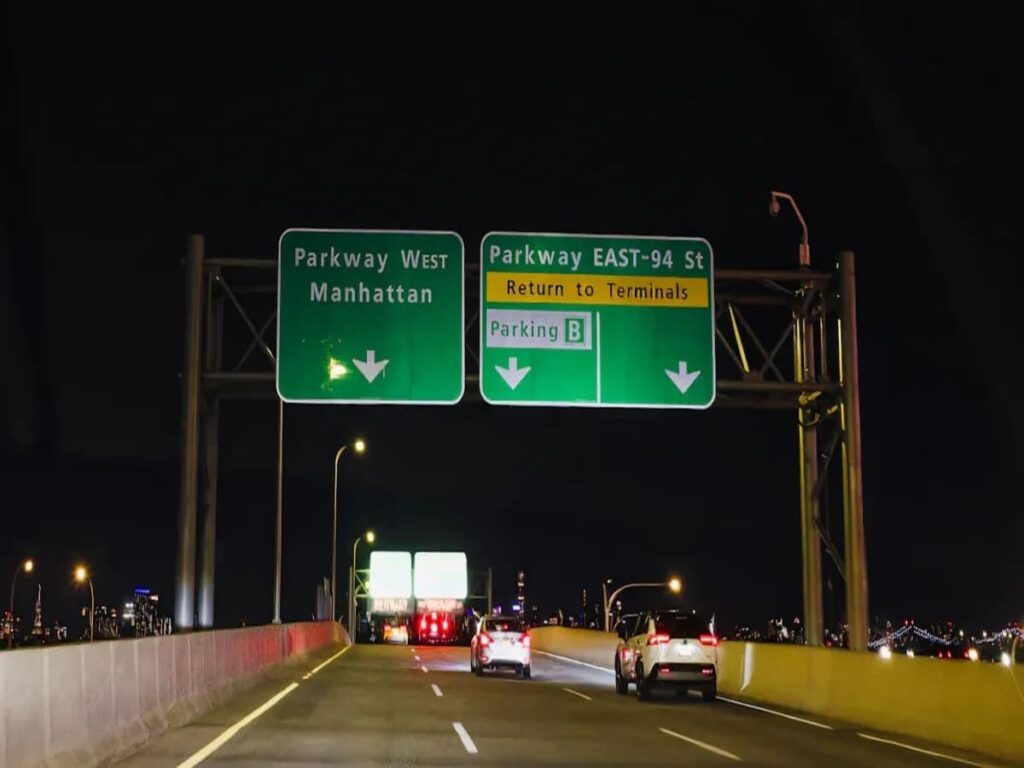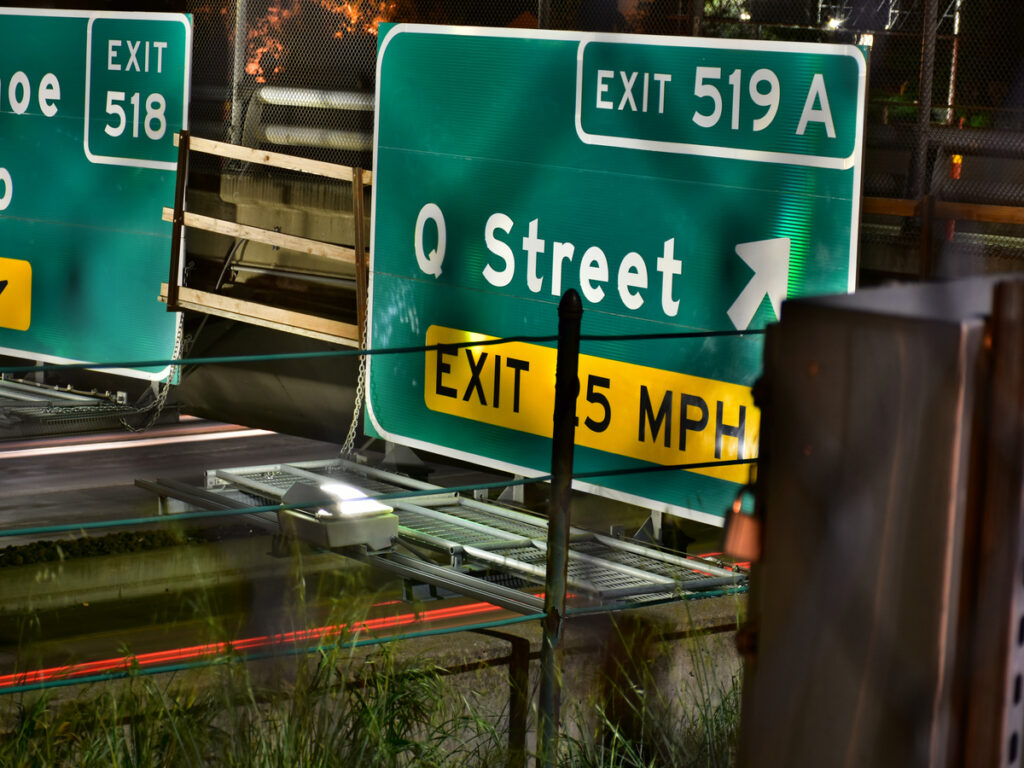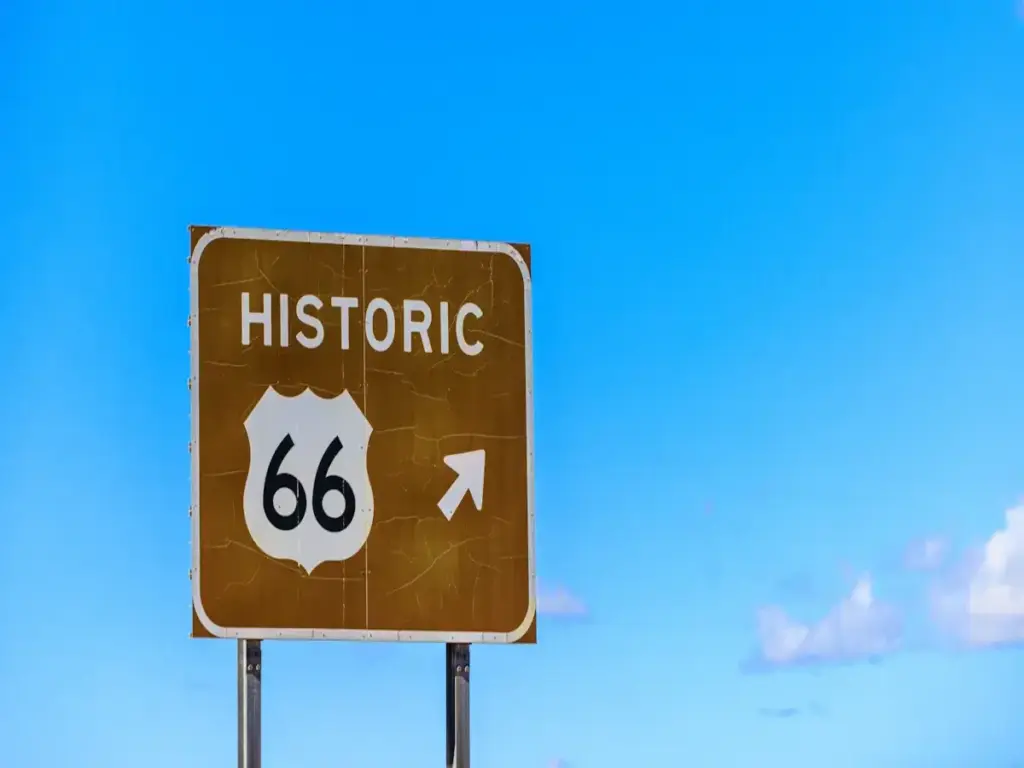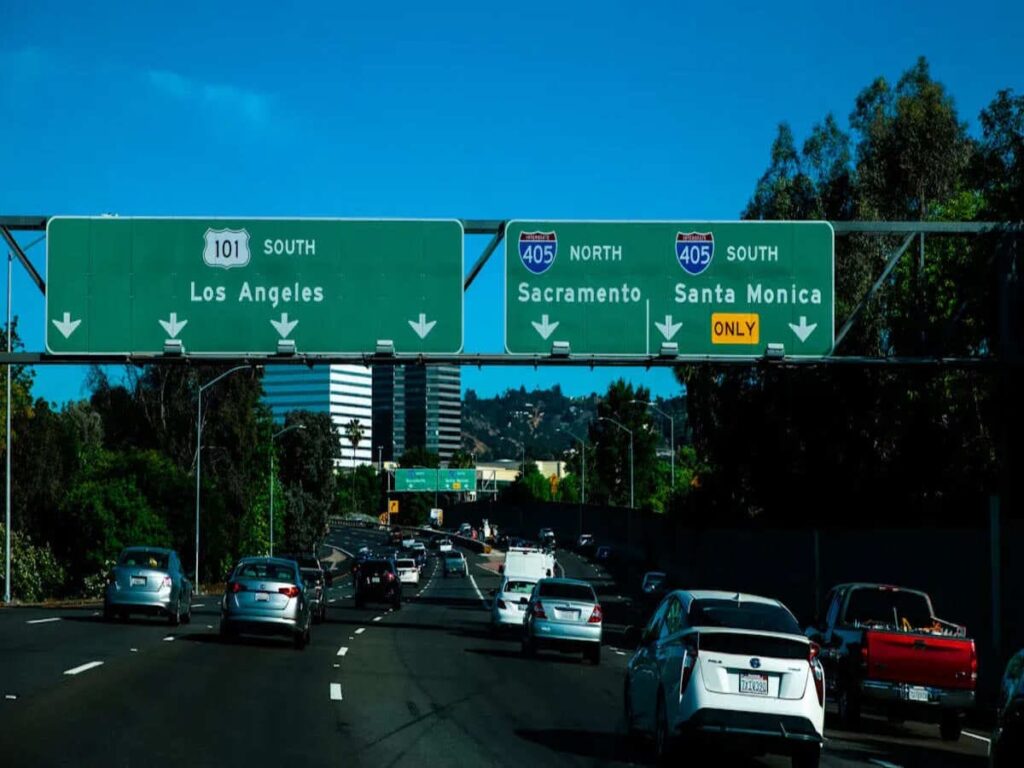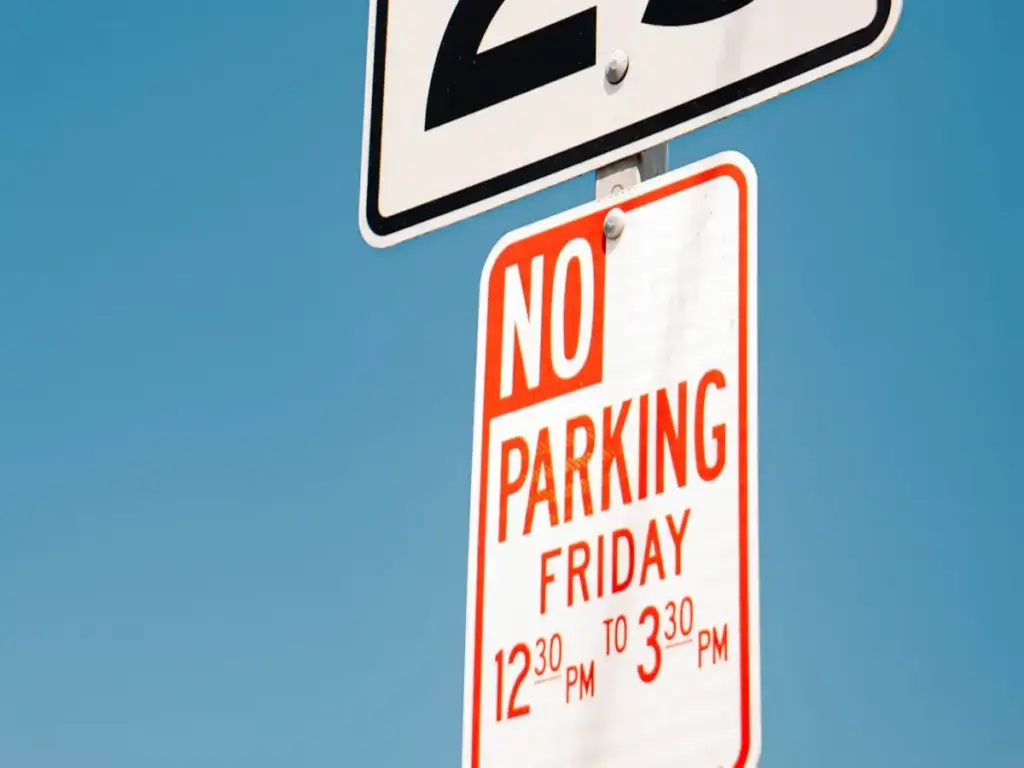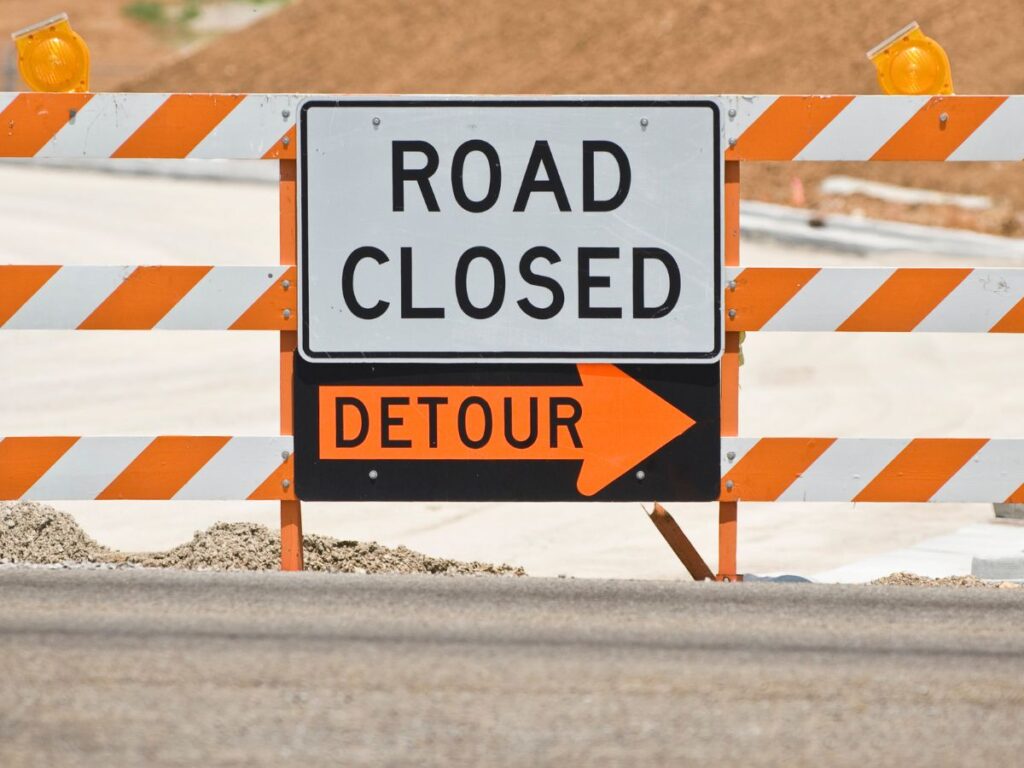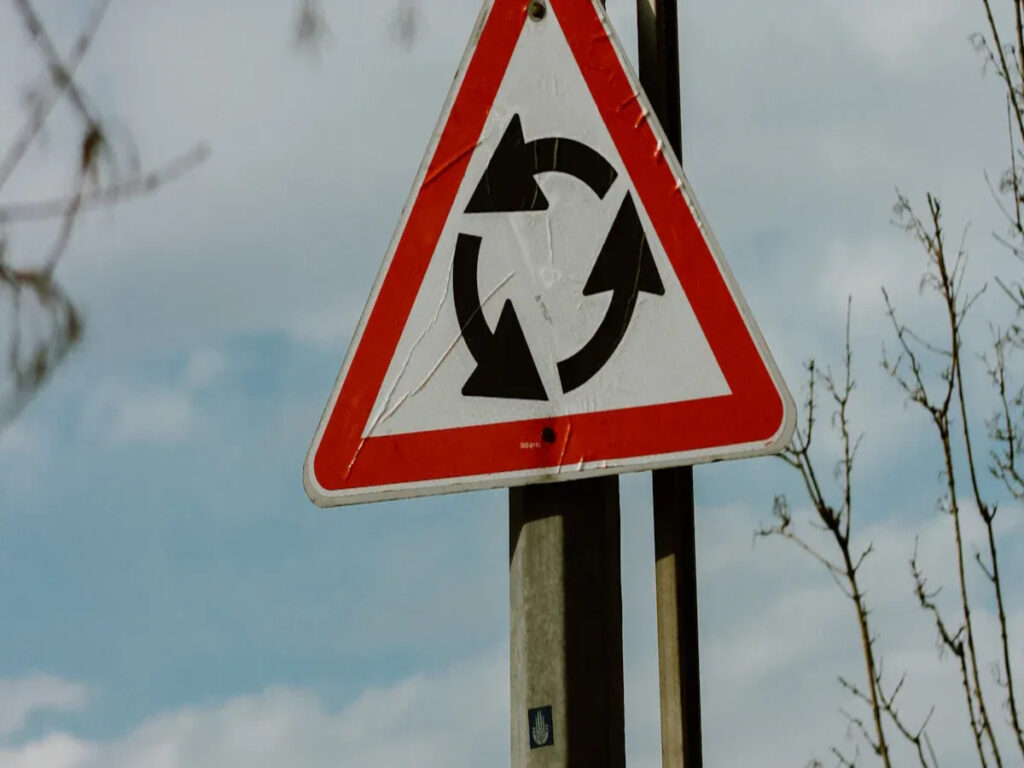
I segnali stradali in vendita sono visti su molte strade in Australia. I materiali utilizzati per farli influenzare l'ambiente. Vecchi tipi come l'alluminio e le materie plastiche hanno bisogno di molta energia per fare. Questo rende la loro impronta di carbonio più alta. Alcuni nuovi segni usano materiali a base biologica come il bio-polyetilene. Questi provengono da fonti che possono essere sostituite. I segni a base di bio durano a lungo e possono essere riciclati completamente. Scegliere materiali forti e riciclabili aiuta l'ambiente. Supporta anche un'economia circolare.
OPTRAFFIC sostiene pratiche sostenibili offrendo prodotti eco-consapevoli Segno stradale materiali e segnali stradali riciclabili, aiutare gli appaltatori e gli enti locali a ridurre il loro impatto ambientale senza compromettere la sicurezza.
Impatto ambientale dei materiali della segnaletica stradale

Utilizzo delle risorse ed emissioni
La realizzazione della segnaletica stradale utilizza molte risorse e provoca inquinamento. Ogni materiale influisce sull'ambiente a modo suo.
- L’alluminio e l’acciaio necessitano di molta energia per essere prodotti. Le fabbriche devono diventare molto calde e utilizzare strumenti speciali. Ciò costa più denaro e produce gas serra.
- I produttori spesso applicano rivestimenti sui segnali per proteggerli. Alcuni rivestimenti sono dannosi per la natura se non si decompongono bene. I nuovi rivestimenti cercano di rompersi in modo sicuro e di non produrre microplastiche.
- Alcune aziende utilizzano meno energia e imballaggi migliori. Fanno insegne che durano più a lungo e producono meno spazzatura.
- Anche le pellicole riflettenti sulla segnaletica sono importanti per l'ambiente. Alcune nuove pellicole possono essere riciclate e necessitano di meno energia per essere prodotte.
Uno studio ha esaminato due modi per realizzare pannelli compositi per la segnaletica. Il metodo dell'autoclave utilizzava meno energia e produceva meno inquinamento rispetto al metodo della pressa a caldo. Ciò significa che il modo in cui viene realizzato un segno può cambiare il suo effetto sul pianeta.
Mancia: Scegliere cartelli realizzati con meno energia e materiali riciclabili aiuta a ridurre i gas serra.
Preoccupazioni relative ai rifiuti e alle discariche
Molti segnali stradali diventano spazzatura quando sono vecchi. Il materiale decide la quantità di rifiuti mandata in discarica.
- Meno di 1% della segnaletica stradale in PVC in Australia viene riciclata ogni anno. La maggior parte viene gettata via o bruciata secondo regole rigide.
- La segnaletica in PET e HDPE viene riciclata maggiormente, A 18.5% E 8.9%. I luoghi di riciclaggio prendono questi materiali più spesso.
- I cartelli in PVC sono difficili da riciclare a causa del cloro e di altri prodotti chimici.
- Fare segnali può causare inquinamento, come rilasciare COV. Anche le fabbriche consumano molta energia.
- Alcuni segni, Piace Classe 1 PVC, scorso 7 A 10 anni. Dopo di che, la maggior parte finisce in discarica poiché il riciclaggio è difficile.
- Segni che durano più a lungo, Come la classe 3, producono meno rifiuti ma consumano più energia e sono più difficili da riciclare.
- I comuni hanno difficoltà a riciclare la vecchia segnaletica, soprattutto quelli in PVC. A volte sono necessari riciclatori speciali.
Ora, le persone usano plastica di origine biologica e perle di vetro riciclato per aiutare. Certificazioni come ISO 14001 contribuire a ridurre il danno derivante dalla creazione di segnali.
Comuni e acquirenti possono aiutare scegliendo cartelli che durano più a lungo e sono più facili da riciclare. Ciò significa meno rifiuti e meno inquinamento.
Materiali comuni nei segnali stradali australiani

Alluminio
Alluminio è un materiale molto comune per la segnaletica stradale in Australia. Consigli e lavoratori lo scelgono perché è forte e dura a lungo. Alluminio i segnali possono rimanere buoni per oltre dieci anni all'esterno. Non arrugginano né si sbiadiscono facilmente. Vento e pioggia non li danneggiano molto. Riciclaggio alluminio utilizza molta meno energia rispetto a crearne di nuovi alluminio. Ciò aiuta a ridurre l’inquinamento e a risparmiare denaro. Di 75% di tutti alluminio mai realizzato è ancora in uso adesso.
La tabella seguente elenca gli aspetti positivi e negativi dell'utilizzo alluminio Per i segnali stradali:
| Aspetto ambientale | Vantaggi dell'alluminio | Svantaggi dell'alluminio |
|---|---|---|
| Riciclabalità | Facile da riciclare, quindi è meglio per il pianeta | N / A |
| Durabilità | Dura a lungo e non necessita di essere sostituito spesso | N / A |
| Resistenza alle intemperie | Non arrugginisce né sbiadisce, Anche in caso di maltempo | N / A |
| Manutenzione | Ha bisogno di poca cura; basta pulirlo a volte | N / A |
| Uso di energia di produzione | N / A | Fare nuovo alluminio consuma molta energia e inquina |
| Confronto con la plastica | Meglio del coroplast perché dura di più e può essere riciclato | N / A |
Nota: Riciclaggio alluminio risparmia energia e aiuta l'ambiente, ma facendone di nuovi alluminio consuma ancora molta energia.
Pannelli compositi
Pannelli compositi, chiamato materiale composito di alluminio o acm, averne due sottili alluminio fogli e una parte centrale in plastica. Questi pannelli sono più leggeri e si piegano più del solido alluminio. Non si rompono né si piegano facilmente. L'acqua non li danneggia, quindi vanno bene per l'esterno. I pannelli ACM possono durare da 10 A 20 anni, a seconda del loro rivestimento. Nuovi modi di riciclaggio possono recuperare quasi tutto alluminio e plastica da questi pannelli. Ciò aiuta a tenere i rifiuti fuori dalle discariche e sostiene la bioedilizia. I pannelli ACM possono anche contribuire a mantenere gli edifici più freschi, quindi è necessaria meno energia.
Materie plastiche e altri materiali
Molti segnali stradali utilizzano plastica e altri oggetti riciclati. Questi materiali aiutano l’ambiente in molti modi:
- Utilizzando riciclato alluminio e la plastica significa meno rifiuti e risparmio di risorse.
- Sono necessarie meno sostituzioni, quindi meno va in discarica.
- I cartelli realizzati con plastica riciclata durano più a lungo e resistono bene alle intemperie.
- Fare questi segni consuma meno energia, quindi c'è meno inquinamento.
- Certificazioni come ISO 14001 assicurarsi che vengano seguite regole rigide.
- Alcuni segnali utilizzano l'energia solare, che consente di risparmiare ancora più energia.
Scegliere segnali stradali in vendita realizzati con materiali riciclati o ecologici aiuta le amministrazioni comunali e i lavoratori a raggiungere i propri obiettivi ambientali e a sostenere un’economia circolare.
Per saperne di più sull'impatto dei materiali sostenibili sulle prestazioni della segnaletica stradale e sull'ambiente, Leggi il nostro blog: In che modo le scelte materiali modellano il futuro dei segnali stradali in vendita in Australia.
Riciclabilità dei segnali stradali in vendita
Riciclaggio dell'alluminio
L'alluminio è uno dei materiali più facili da riciclare nei segnali stradali in vendita. Il riciclaggio dell'alluminio utilizza fino a 95% meno energia rispetto alla produzione di nuovo alluminio dal minerale. Ciò significa anche che meno gas serra vengono immessi nell’aria. Molti centri di riciclaggio in Australia accettano cartelli in alluminio. I lavoratori rimuovono eventuali pellicole o rivestimenti di plastica prima del riciclaggio. Dopo la pulizia, l'alluminio viene fuso in una fornace. Le fabbriche poi lo trasformano in nuovi fogli o altri prodotti.
La maggior parte dei comuni e degli appaltatori scelgono le segnaletiche in alluminio perché durano a lungo e possono essere riciclate più volte senza perdere resistenza. I vecchi segni possono diventare nuovi segni, lattine, o parti di automobili. Ciò impedisce ai rifiuti di finire in discarica e favorisce l’economia circolare. Inoltre, il riciclaggio dell’alluminio crea posti di lavoro e fa risparmiare denaro alle aree locali.
♻️ Riciclare la segnaletica in alluminio aiuta il pianeta e significa che abbiamo bisogno di meno nuove materie prime.
Sfide del riciclaggio di compositi e plastica
I pannelli compositi e la segnaletica in plastica sono più difficili da riciclare rispetto all'alluminio. Questi segni hanno spesso strati, come fogli di alluminio con anima in plastica o plastiche diverse. Ciò rende difficile smontare e riciclare ogni pezzo.
Alcuni grossi problemi con il riciclaggio dei segnali stradali in materiale composito e plastica sono:
- Compositi multistrato difficili da riciclare
- Non ci sono abbastanza centri di riciclaggio o soldi
- Costi elevati per norme e controlli
- Regole diverse in ogni luogo
- Non molte persone conoscono i materiali ecologici
- Difficile bilanciare la forza del segno con l’essere verde
L’Australia cerca di risolvere questi problemi definendo regole chiare sugli imballaggi e vuole dimezzare i rifiuti di imballaggio 2030. Il governo e i gruppi industriali lavorano insieme per migliorare il riciclaggio. Vogliono che le persone utilizzino più plastica riciclata, compositi biodegradabili, e metalli verdi per supporti segnaletici. L'insegnamento e le ricompense aiutano i comuni e le aziende a scegliere materiali migliori.
Anche con questi piani, molti segnali compositi e di plastica finiscono ancora in discarica. Alcuni centri di riciclaggio non possono gestire plastica morbida o materiali misti. Per raggiungere gli obiettivi di riciclaggio sono necessari più fondi e una migliore raccolta. Comuni e appaltatori possono aiutare scegliendo segnali realizzati con materiali più facili da riciclare e scegliendo fornitori che utilizzano opzioni ecologiche.
I comuni e gli acquirenti dovrebbero chiedere ai fornitori informazioni sul riciclaggio e cosa succede ai segnali alla fine della loro vita. Ciò aiuta a ridurre gli sprechi e a mantenere l’ambiente più pulito.
Durata della vita dei materiali e sostenibilità
Durabilità e tassi di sostituzione
I segnali stradali in Australia devono affrontare condizioni meteorologiche avverse. C'è un sole forte, vento, e pioggia. Il materiale di un segno decide quanto dura. I cartelli in alluminio e compositi funzionano bene in caso di maltempo. Questi materiali non arrugginiscono né sbiadiscono. Inoltre non assorbono l'acqua. Hanno bisogno di poche cure e rimangono in buone condizioni per molti anni. Le insegne in alluminio spesso durano più di dieci anni all'esterno. Anche i pannelli compositi durano a lungo. Non si piegano o si rompono facilmente. Le pellicole viniliche polimeriche possono durare dai cinque ai sette anni. Le pellicole di plastica più economiche possono durare solo due o tre anni. I segnali in plastica ondulata sono i migliori per un uso breve. Durano circa tre mesi prima di consumarsi.
Materiali resistenti come l'alluminio riciclato e la plastica aiutano i segnali a durare più a lungo. Ciò significa che i lavoratori non devono sostituirli spesso. Meno sostituzioni fanno risparmiare denaro e producono meno rifiuti. L’uso di materiali riciclati aiuta un’economia circolare. Progettazioni a risparmio energetico, come i segnali a energia solare, minor danno all’ambiente.
Scegliere materiali resistenti per la segnaletica stradale aiuta i comuni a risparmiare risorse e a ridurre l’inquinamento. Se desideri esplorare le migliori opzioni di materiali per il tuo progetto, Dai un'occhiata al nostro blog: Quale materiale è giusto per te? Confronto dei segnali di sicurezza in vendita: Alluminio vs plastica vs magnetico.
Strategie di riduzione delle discariche
Per produrre meno rifiuti in discarica, devi scegliere i materiali giusti. I cartelli realizzati in alluminio o plastica riciclata possono essere riciclati molte volte. Ciò li tiene lontani dalle discariche e consente di risparmiare materie prime. Meno sostituzioni significano meno rifiuti e costi inferiori. I sistemi di sostituzione gestita utilizzano dati come garanzie di segnaletica e condizioni meteorologiche per pianificare le modifiche. Questi sistemi impediscono che i segnali vengano gettati via troppo presto.
Le agenzie utilizzano diversi modi per decidere quando sostituire i segnali. Guardano i segni, controlla quanto bene riflettono la luce, e monitorare la loro età. Questi passaggi aiutano i comuni a sostituire solo i segnali che ne hanno bisogno. Usando forte, materiali riciclabili e piani intelligenti, i comuni possono produrre meno rifiuti in discarica e proteggere l’ambiente.
I comuni che utilizzano queste idee aprono la strada a rendere la segnaletica stradale più sostenibile.
Alternative ecologiche
Materiali riciclati e di origine biologica
Molti comuni e appaltatori ora scelgono materiali riciclati e di origine biologica per la segnaletica stradale. Questi materiali aiutano a ridurre gli sprechi e a risparmiare risorse naturali. Per esempio, I pannelli Bio-SIP™ utilizzano plastica riciclata e parti di origine biologica. Ciò significa meno necessità di nuove materie prime e minori emissioni di carbonio. Questi pannelli sono leggeri e aiutano a risparmiare energia. Sono inoltre in linea con gli obiettivi dell’economia circolare perché possono essere riciclati nuovamente dopo l’uso.
I produttori utilizzano plastica riciclata per realizzare coni stradali e altri articoli per la sicurezza stradale. Ciò consente di risparmiare risorse e di evitare che la vecchia plastica finisca in discarica. Alcuni coni possono rompersi naturalmente nel tempo perché sono biodegradabili. I coni forti durano più a lungo, quindi i lavoratori non devono sostituirli così tanto. Ciò riduce l'impatto ambientale derivante dalla produzione e dallo smaltimento dei coni.
Materiali compositi come la plastica rinforzata con fibra di vetro (GFRP) e plastica rinforzata con fibra di carbonio (Cfrp) sono forti e leggeri. Questi sono buoni per segnali e barriere. Questi materiali non arrugginiscono e resistono alle intemperie. I pannelli compositi in alluminio sono resistenti ma non pesanti, quindi sono facili da spostare e durano a lungo. Spesso, questi compositi durano più a lungo e funzionano meglio dei materiali più vecchi.
La scelta di materiali riciclati e di origine biologica aiuta i comuni a raggiungere i propri obiettivi di sostenibilità e a ridurre la propria impronta di carbonio.
Opzioni stabilizzate ai raggi UV e resistenti agli agenti atmosferici
I materiali stabilizzati ai raggi UV e resistenti agli agenti atmosferici sono importanti per la segnaletica stradale verde e il policarbonato stabilizzato ai raggi UV blocca la luce solare dannosa e impedisce ai segnali di sbiadirsi o rompersi. Ciò mantiene i segnali chiari e facili da leggere per molti anni. I materiali resistenti agli agenti atmosferici come la fibra di vetro e i metalli rivestiti resistono alla pioggia, vento, sale, e inquinamento. Queste caratteristiche fanno sì che i segnali non debbano essere sostituiti spesso, quindi ci sono meno rifiuti.
Alluminio, acciaio inossidabile, e le buone plastiche come l'acrilico e il policarbonato non arrugginiscono né vengono danneggiate dall'ambiente. Le finiture resistenti ai raggi UV mantengono i colori brillanti e fanno sembrare nuove le insegne. Meno sostituzioni significano meno sprechi e minori costi per i comuni. L'utilizzo di questi materiali aiuta gli acquirenti a ottenere segnali che durano a lungo e proteggono l'ambiente.
I cartelli stabilizzati ai raggi UV e resistenti agli agenti atmosferici durano più a lungo, fare meno sprechi, e contribuire a mantenere le strade australiane più verdi.
Approvvigionamenti e Certificazioni
Standard per gli appalti verdi
I comuni e gli acquirenti in Australia utilizzano regole verdi quando scelgono i segnali stradali per la vendita. Queste regole li aiutano a scegliere materiali che durano più a lungo e sono più rispettosi dell’ambiente. IL AS/NZS 1906 lo standard fornisce regole per fogli riflettenti. Divide il rivestimento in tre classi. Ogni classe ha il proprio livello di luminosità e quanto dura. Classe 3 è il più brillante e rimane buono più a lungo. È meglio per strade veloci o importanti. Classe 1 e classe 2 sono per strade con meno traffico.
| Classe riflessiva | Uso tipico | Livello di costo | Rischio di conformità |
|---|---|---|---|
| Classe 2 | Strade poco trafficate o normali | Basso | Rischio maggiore se applicato in modo errato |
| Classe 1 | Segnali stradali standard | Medio | Rischio moderato |
| Classe 3 | Strade ad alta velocità o critiche | Alto | Basso rischio |
Le squadre che acquistano segnali stradali in vendita cercano certificati come AS/NZS 1906 certificato. Tengono registri per mostrare che i segnali seguono le regole. Queste regole aiutano le persone a fare scelte ecologiche garantendo che la segnaletica duri più a lungo e non debba essere sostituita così spesso. Ciò consente di risparmiare risorse e produrre meno rifiuti.
Scegliere il giusto telo riflettente aiuta i comuni a raggiungere obiettivi di sicurezza ed ecologici.
Certificazioni ambientali
I certificati ambientali aiutano gli acquirenti a trovare fornitori che hanno a cuore la natura. Ecolabel come GECA (Buona scelta ambientale in Australia) mostrare che un prodotto soddisfa rigorose regole ecologiche. Iso 14001 è una regola mondiale per la tutela dell’ambiente. I fornitori con questo certificato seguono buone misure per ridurre i danni alla natura. Dichiarazioni di prodotti ambientali (EPD) fornire dati chiari sull’impronta di carbonio di un prodotto e se può essere riciclato.
I comuni e gli acquirenti possono chiedere ai fornitori di mostrare questi certificati. Possono anche chiedere come il fornitore ricicla la vecchia segnaletica. Ciò aiuta a garantire che i segnali stradali in vendita siano sicuri per le persone e per il pianeta.
I comuni che richiedono certificati verdi e piani di riciclaggio aprono la strada all'acquisto di cose che sono migliori per l'ambiente.
Consigli e appaltatori: Dare l'esempio
Partenariati con i fornitori
I comuni e gli appaltatori hanno un ruolo importante nel rendere più ecologico l'uso dei segnali stradali. Possono scegliere fornitori che riciclano o riprendono la vecchia segnaletica. Queste partnership contribuiscono a ridurre gli sprechi e a sostenere un’economia circolare. Alcuni fornitori raccolgono la segnaletica usata e riciclano i materiali. Altri realizzano nuovi segnali stradali da vendere utilizzando materiali riciclati. A Victoria, i comuni lavorano con fornitori che raccolgono vecchi segnali di alluminio. Questi segni si trasformano in cose nuove, come lattine o più cartelli.
Una buona partnership con un fornitore di solito ha:
- Modi chiari per riciclare o riprendere la segnaletica
- La prova che la nuova segnaletica utilizza materiali riciclati
- Aiuta a smistare e raccogliere vecchi segni
I consigli che lavorano con fornitori responsabili danno il buon esempio. Mostrano ad altri che è possibile produrre meno rifiuti in discarica dai segnali stradali in vendita.
Gestione del fine vita
Gestione del fine vita significa pianificare cosa fare con i segnali quando non saranno più necessari. I comuni e gli appaltatori possono aggiungere questi piani alle loro regole di acquisto. Questo aiuta a mantenere i segnali fuori dalla discarica. Possono chiedere ai fornitori certificati di riciclaggio o prove che i segnali siano stati smaltiti correttamente. Contare quanti segnali vengono riciclati ogni anno aiuta i comuni a vedere quanto stanno facendo bene l'ambiente.
Una semplice tabella può aiutare a mostrare i progressi:
| Anno | Segni riciclati | Segnali inviati in discarica |
|---|---|---|
| 2022 | 1,200 | 300 |
| 2023 | 1,500 | 200 |
I comuni che monitorano e condividono la gestione del fine vita contribuiscono a creare un futuro più verde. Incoraggiano gli altri a seguire e fare scelte migliori per l’ambiente.
Pratiche sostenibili nella segnaletica stradale in vendita
Scelta dei fornitori responsabili
Scegliere i giusti fornitori di segnaletica stradale è importante per rendere la segnaletica stradale più ecologica. I comuni e gli appaltatori vogliono fornitori che abbiano a cuore l'ambiente e le persone. Stabiliscono obiettivi per ridurre le emissioni di carbonio, risparmiare acqua, e fare meno spazzatura. I fornitori con certificati speciali di gruppi etici sono considerati i migliori.
Un buon fornitore lo farà:
- Usa materiali riciclati e cerca di produrre meno rifiuti.
- Segui regole rigide e agisci onestamente.
- Condividi le loro azioni ecologiche e sii aperto su ciò che fanno.
- Rispettare tutte le leggi e le regole del settore.
- Parla con gli altri e cerca sempre di migliorare.
- Controllare e segnalare come aiutano l'ambiente.
Molti acquirenti utilizzano liste di controllo e visitano i fornitori per vedere se soddisfano gli obiettivi ecologici. Questi controlli assicurano che i fornitori mantengano ciò che promettono. I comuni controllano anche aspetti come il numero di fornitori controllati o se seguono le regole di sicurezza e ambientali.
Un modo semplice per scegliere buoni fornitori è:
- Crea un elenco di regole verdi che corrispondono ai tuoi valori.
- Trova fornitori con ottimi precedenti ambientali.
- Controllali con moduli e visite.
- Guarda come si comportano nel tempo con obiettivi chiari.
- Lavorare insieme a lungo per continuare a migliorare.
I consigli che scelgono buoni fornitori aiutano tutti nel settore a fare meglio.
Guida allo smaltimento e al riciclaggio
Sbarazzarsi e riciclare i segnali stradali in vendita nel modo giusto aiuta il pianeta. Supporta anche un'economia circolare. I comuni e gli appaltatori dovrebbero selezionare i materiali prima di buttare via i cartelli. I cartelli in alluminio vanno ai centri di riciclaggio dei metalli. La plastica e la segnaletica composita necessitano di un riciclaggio speciale.
Una tabella può aiutare a mostrare cosa fare:
| Tipo di materiale | Azione consigliata |
|---|---|
| Alluminio | Riciclare nei centri metallici |
| Pannelli compositi | Utilizzare riciclatori specializzati |
| Plastica | Controlla il riciclaggio locale |
I segnali con pellicole riflettenti potrebbero richiedere passaggi aggiuntivi per rimuovere i rivestimenti. I comuni dovrebbero annotare quali segnali vengono riciclati o gettati via. Tenere traccia li aiuta a vedere quanto stanno andando bene e dove migliorare.
Regole chiare sul riciclaggio significano che meno segnali finiscono in discarica e più materiali vengono riutilizzati.
Scegliere buoni materiali per la segnaletica stradale aiuta il pianeta in futuro. I comuni e i lavoratori sanno che l’alluminio e i materiali compositi possono essere riciclati e durare a lungo. Ciò significa meno rifiuti e meno risorse utilizzate. Le ecocertificazioni aiutano gli acquirenti a scegliere fornitori che hanno a cuore l'ambiente. Le scelte verdi mantengono la natura al sicuro, ridurre il carbonio, e aiutare le persone a rimanere in salute.
I Comuni possono dare l’esempio scegliendo la forza, materiali certificati e collaborazione con buoni fornitori. Controllare spesso i piani e avere chiare fasi di riciclaggio aiuta tutti a fare scelte migliori per le strade pubbliche.
Domande frequenti
Qual è il materiale più ecologico per la segnaletica stradale?
L’alluminio è la scelta migliore per l’ambiente. Dura a lungo e può essere riciclato più volte. Riciclare l’alluminio consuma molta meno energia rispetto alla produzione di nuovo alluminio. I comuni scelgono l’alluminio per produrre meno rifiuti e aiutare il pianeta.
Tutti i segnali stradali possono essere riciclati in Australia??
Non tutti i segnali sono facili da riciclare. I cartelli in alluminio vanno ai centri di riciclaggio dei metalli. La segnaletica composita e in plastica necessita di luoghi di riciclaggio speciali. I comuni dovrebbero verificare quale raccolta differenziata si trova nelle loro vicinanze prima di buttare via i cartelli.
Perché i comuni cercano certificazioni ambientali?
Certificazioni ambientali come GECA o ISO 14001 mostrare che un fornitore segue rigide regole ambientali. Questi certificati aiutano i comuni a scegliere prodotti migliori per la natura.
Come possono gli acquirenti assicurarsi che i fornitori seguano pratiche ecologiche??
- Gli acquirenti possono:
- Richiedere la prova che vengono utilizzati materiali riciclati.
- Richiedi certificati che mostrino standard ecologici.
- Controlla se i fornitori hanno programmi di riciclaggio.
- Consulta i rapporti sui rifiuti e sul riciclaggio.
Cosa dovrebbero fare i comuni con i vecchi segnali stradali??
| Materiale | Miglior azione |
|---|---|
| Alluminio | Riciclare al centro metallo |
| Pannelli compositi | Utilizzare un riciclatore specializzato |
| Plastica | Controlla il riciclaggio locale |
I comuni dovrebbero tenere traccia dei numeri di riciclaggio per migliorare l’aiuto all’ambiente.

